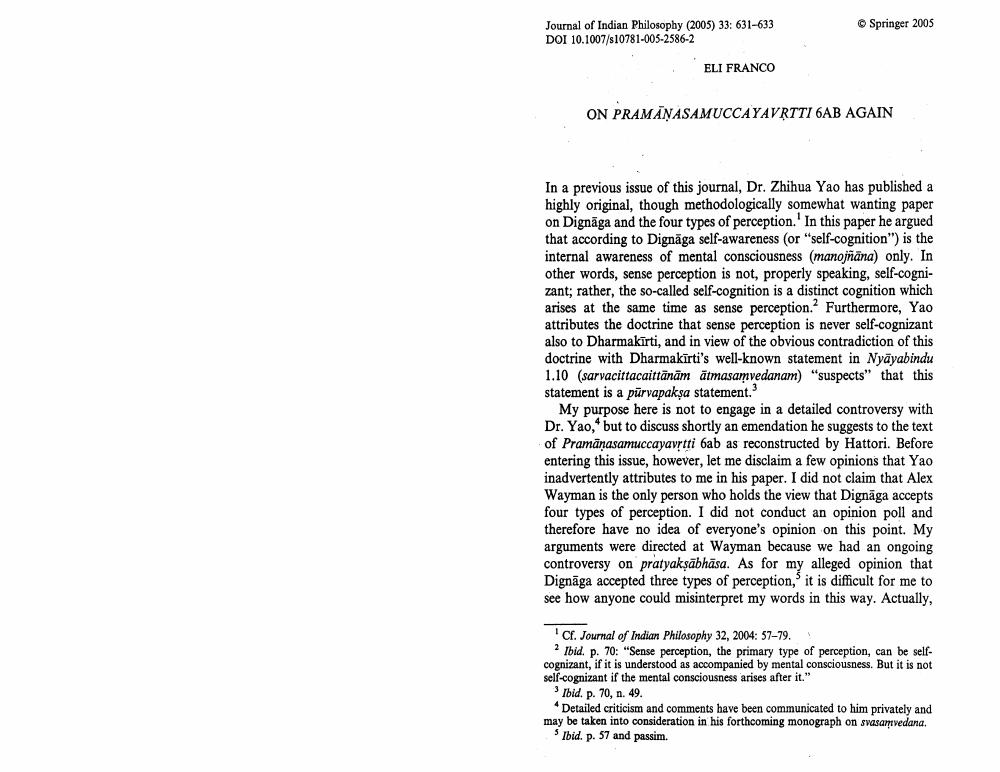________________
© Springer 2005
Journal of Indian Philosophy (2005) 33: 631-633 DOI 10.1007/s10781-005-2586-2
ELI FRANCO
ON PRAMĀNASAMUCCAYAVRTTI 6AB AGAIN
In a previous issue of this journal, Dr. Zhihua Yao has published a highly original, though methodologically somewhat wanting paper on Dignāga and the four types of perception. In this paper he argued that according to Dignāga self-awareness (or "self-cognition") is the internal awareness of mental consciousness (manojñana) only. In other words, sense perception is not, properly speaking, self-cognizant; rather, the so-called self-cognition is a distinct cognition which arises at the same time as sense perception. Furthermore, Yao attributes the doctrine that sense perception is never self-cognizant also to Dharmakīrti, and in view of the obvious contradiction of this doctrine with Dharmakirti's well-known statement in Nyāyabindu 1.10 (sarvacittacaittānām ātmasamvedanam) "suspects" that this statement is a pūrvapaksa statement
My purpose here is not to engage in a detailed controversy with Dr. Yao, but to discuss shortly an emendation he suggests to the text of Pramānasamuccayavrtti 6ab as reconstructed by Hattori. Before entering this issue, however, let me disclaim a few opinions that Yao inadvertently attributes to me in his paper. I did not claim that Alex Wayman is the only person who holds the view that Dignāga accepts four types of perception. I did not conduct an opinion poll and therefore have no idea of everyone's opinion on this point. My arguments were directed at Wayman because we had an ongoing controversy on pratyakşābhāsa. As for my alleged opinion that Dignāga accepted three types of perception, it is difficult for me to see how anyone could misinterpret my words in this way. Actually,
"Cf. Journal of Indian Philosophy 32, 2004: 57–79.
Ibid. p. 70: "Sense perception, the primary type of perception, can be selfcognizant, if it is understood as accompanied by mental consciousness. But it is not self-cognizant if the mental consciousness arises after it."
Ibid. p. 70, n. 49.
Detailed criticism and comments have been communicated to him privately and may be taken into consideration in his forthcoming monograph on sasartvedana.
Ibid. p. 57 and passim.




